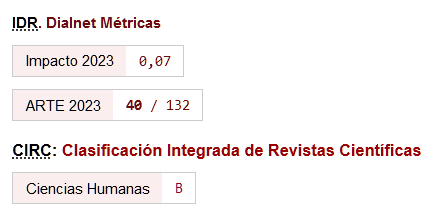La ciudad hispanoamericana, medieval, renacentista y americana
Keywords:
urban history, Spanish American city, grid, checkerboard, Renaissance, central square, major church, mudejarAbstract
The urban project is related to the correspondent culture of each epoch and the stylistic categories of that culture. In this article, we shall examine different aspects of sixteenth century Spanish American urban projects as a social Spanish-American phenomenon of the new world in the transition from de Middle Ages to Renaissance and the clash with the American. Before 1530, Caribbean and Tierra Firme Spanish foundations, which put into practice a Medieval urbanism, were made with fairly regular "traza" or city plan but did not conform a grid pattern or a central space grouping all the major buildings. We assume that, around 1530, new cities were laid out in checkerboard arrangement; the urban structure and the functional organization are of renaissance character. The main qualities of this urban design are regularity, geometry, modulation, simplicity and centrality, the same renaissance qualities we see in the architectural public design at the times of Charles V. But we can also observe medieval forms in the townscape of the new cities and an astonishing scale of the blocks and the "plaza"(major square), that suggest an American origin.
Downloads
Published
How to Cite
Issue
Section
License
Copyright (c) 2005 Alberto Nicolini

This work is licensed under a Creative Commons Attribution-NonCommercial-ShareAlike 4.0 International License.
Los autores/as que publican en Atrio. Revista de historia del arte están de acuerdo con los siguientes términos:
- Los autores/as conservan los derechos de autor y garantizan a la revista el derecho de ser la primera publicación del trabajo al igual que licenciado bajo una licencia de Creative Commons Attribution-NonCommercial-ShareAlike 4.0 International License que permite a otros compartir el trabajo con un reconocimiento de la autoría de este y la publicación inicial en esta revista.
- El autor/a o cedente del material que se entrega para su publicación autoriza a la revista para que publique, sin obligación alguna (económica o de otra naturaleza), el contenido del referido manual tanto en formato papel, como en digital, así como en cualquier otro medio. Esta cesión de uso del material entregado comprende todos los derechos necesarios para la publicación del material en la revista. Quedan garantizados, simultáneamente, los derechos morales del autor
- El autor/a o cedente es plenamente consciente y está de acuerdo con que todos o cualesquiera de los contenidos proporcionados, formarán una obra cuyo uso se cede a la revista para su publicación total o parcial.
- El autor/a o cedente garantiza ser el titular de los derechos de Propiedad Intelectual sobre los contenidos proporcionados, es decir, sobre el propio texto e imágenes/fotografías/obras fotográficas que se incorporan en su artículo.
- El autor/a o cedente asegura y garantiza: (i) que todo el material enviado a la revista cumple con las disposiciones legales aplicables; (ii) que la utilización de cualquier material protegido por derechos de autor y derechos personales en la concepción del material se encuentra regularizada; (iii) que obtuvo las licencias de derechos, permisos y autorizaciones necesarias para la ejecución del material, inclusive los derechos de imagen, si fueran aplicables; y (iv) que el material no viola derechos de terceros, incluyendo, sin limitarse a estos, los derechos de autor y derechos de las personas.
- El autor/a o cedente, exime a la revista de toda y cualquier responsabilidad con relación a la violación de derechos de autor, comprometiéndose a emplear todos sus esfuerzos para auxiliar a la revista en la defensa de cualquier acusación, medidas extrajudiciales y/o judiciales. Asimismo, asume el abono a la revista de cualquier cantidad o indemnización que esta tenga que abonar a terceros por el incumplimiento de estas obligaciones, ya sea por decisión judicial, arbitral y/o administrativa.













